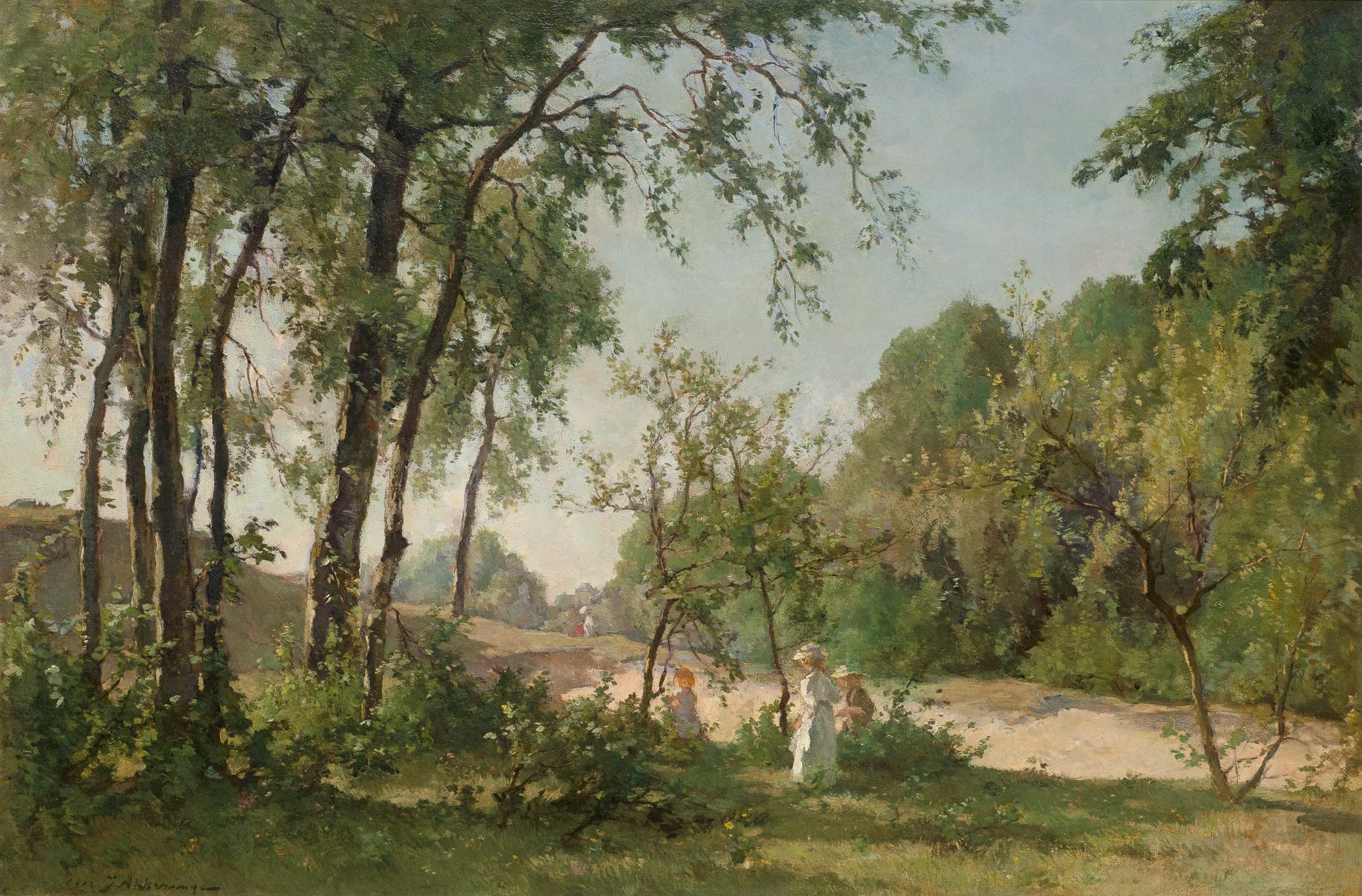J.E.H. (JOHANNES) AKKERINGA 1861 Banka - 1942 Amersfoort Blossom Branches in a Ginger Jar
Oil / Canvas: 49 x 32 cm
- This artwork can be viewed in our gallery
- Call us for more information: +31 26 361 1876
- World wide shipping available
Width: 32 cm
Over J.E.H. (JOHANNES) AKKERINGA
The title of a retrospective exhibition at the Katwijk Museum in 2010 “Akkeringa, painter of the carefree life” is a good description of his work. Born in the Dutch East Indies, he lost his father early in life and was sent to The Netherlands as a young boy to grow up in the household of an aunt. His difficult youth is probably the reason his subjects ranged from children happily playing by the seaside, tea parties in lush summer gardens, mothers with children in parks or walking in the countryside to peaceful still lives of flowers; the depiction of a happy world. As an artist he followed the traditional academic path first in The Hague, later in Rotterdam. Akkeringa became a member of all the well-known artists societies of his time and worked together with several famous Dutch artists like Jan Toorop, Willem de Zwart and George Breitner. In 1887 Akkeringa moved to Loosduinen, near The Hague, as the area was viewed as one of the last remaining authentic unspoilt landscapes in the region. Together with several contemporaries the so-called “Loosduinse painters colony “or “The Hague Barbizon “began. In mid-1909 Akkeringa built a studio in the dunes at Meijendel, between The Hague and Wassenaar. The studio was financed by his art dealer Van Wisselingh and served as a classroom in which Akkeringa taught his students. He was married twice and had several children who often were the subjects of his paintings. In 1903 he moved from The Hague to the province of Brabant away from the coast. He died in 1942 at the age of eighty-one. His style throughout his successful career can be described as subtle impressionism: a combination of strong and pastel colour hues rendered in confident brushstrokes catching the atmosphere and the light of the moment. His still lives are realistic in their simplicity with usually one type of flower in traditional Dutch vases on a bare table. Apart from a trip in 1932 to visit his oldest son Leo, who lived in Paris, Akkeringa did not travel abroad. His paintings though, did. Not only were they exhibited in Amsterdam at E.J.van Wisselingh’s gallery but also at the London branch of the company. He participated in several international exhibition in Europe and then sending them as far as Buenos Aires in 1910 and Winnipeg in 1913. His work remains popular to this day.



